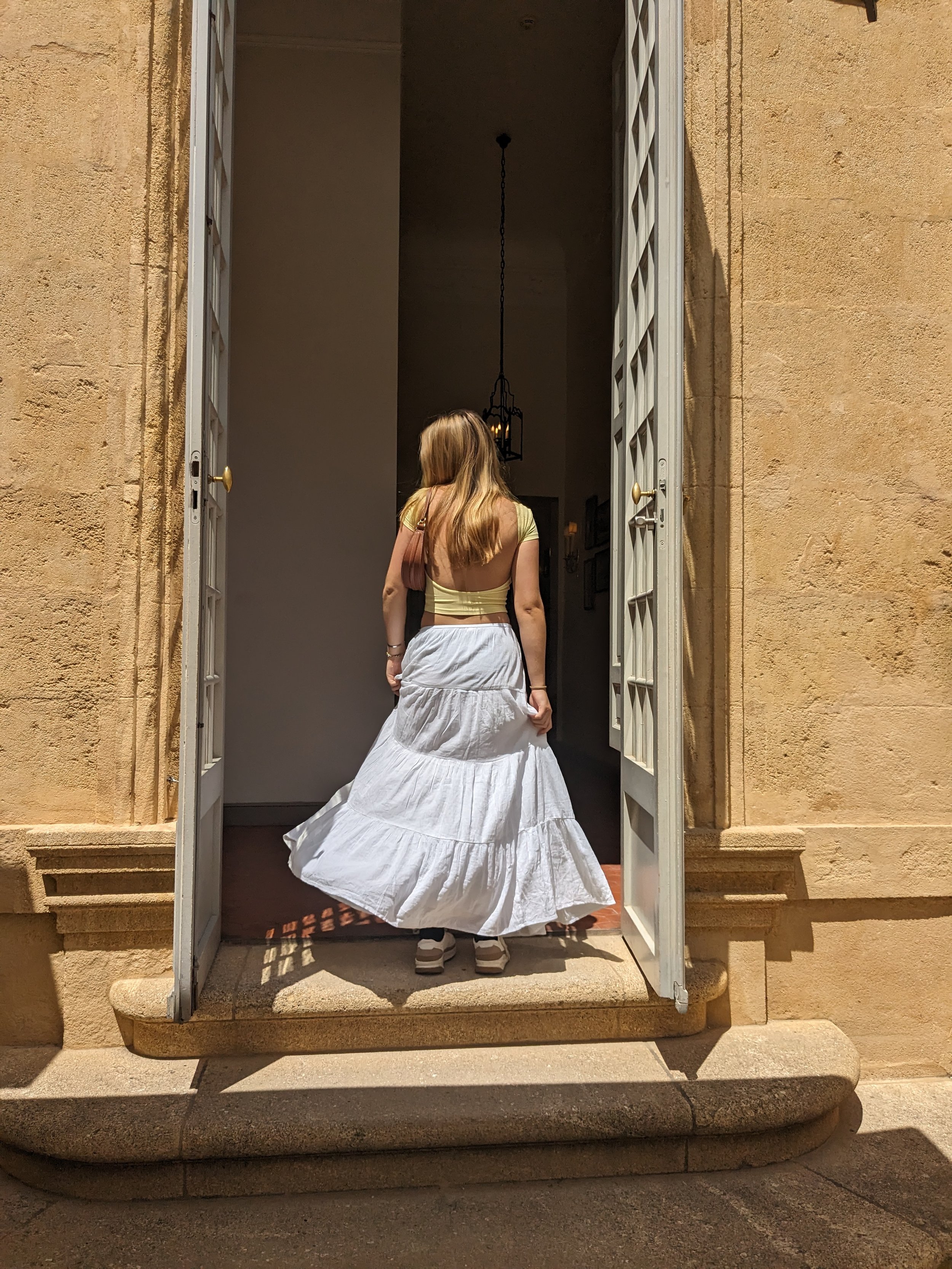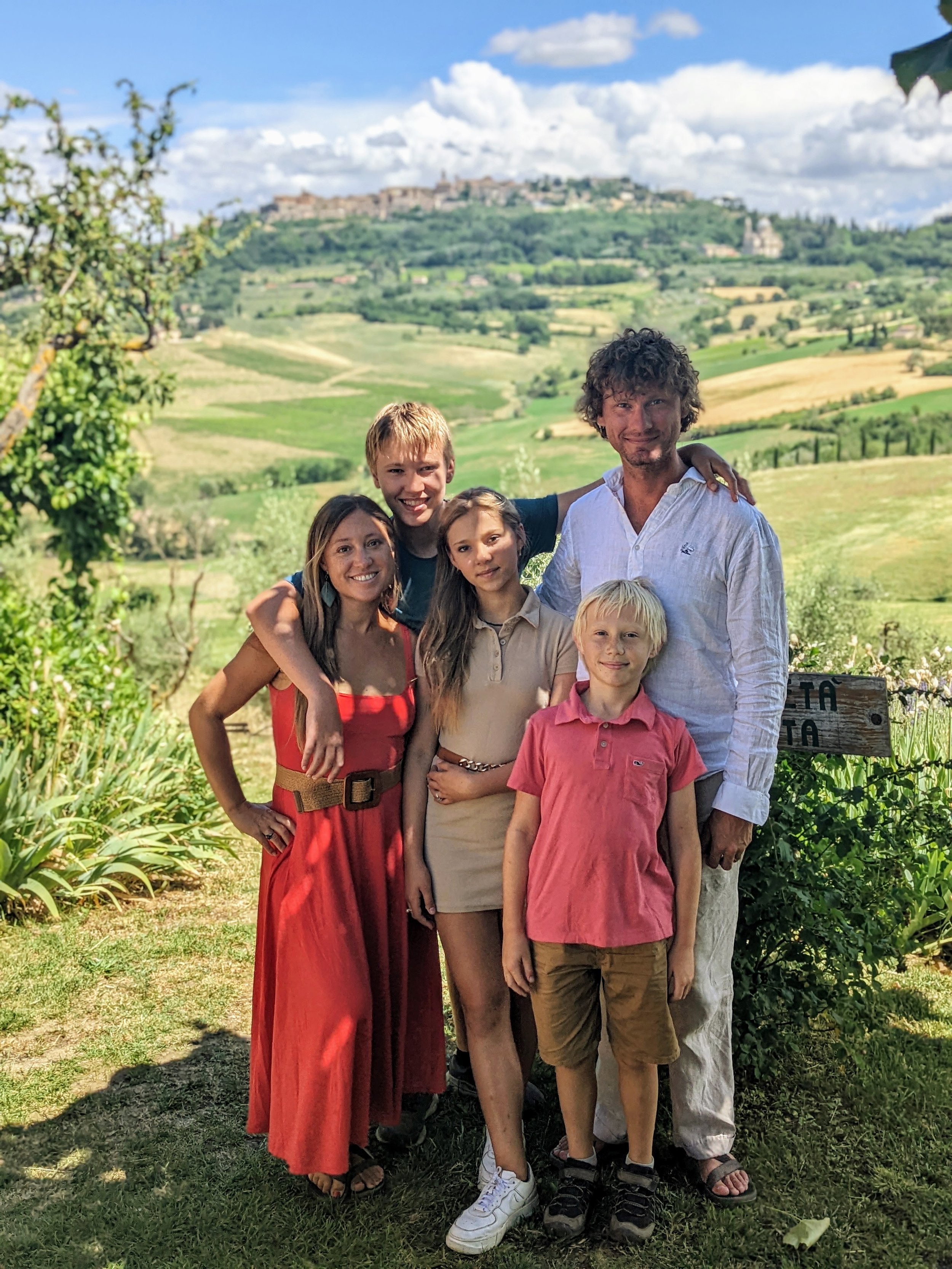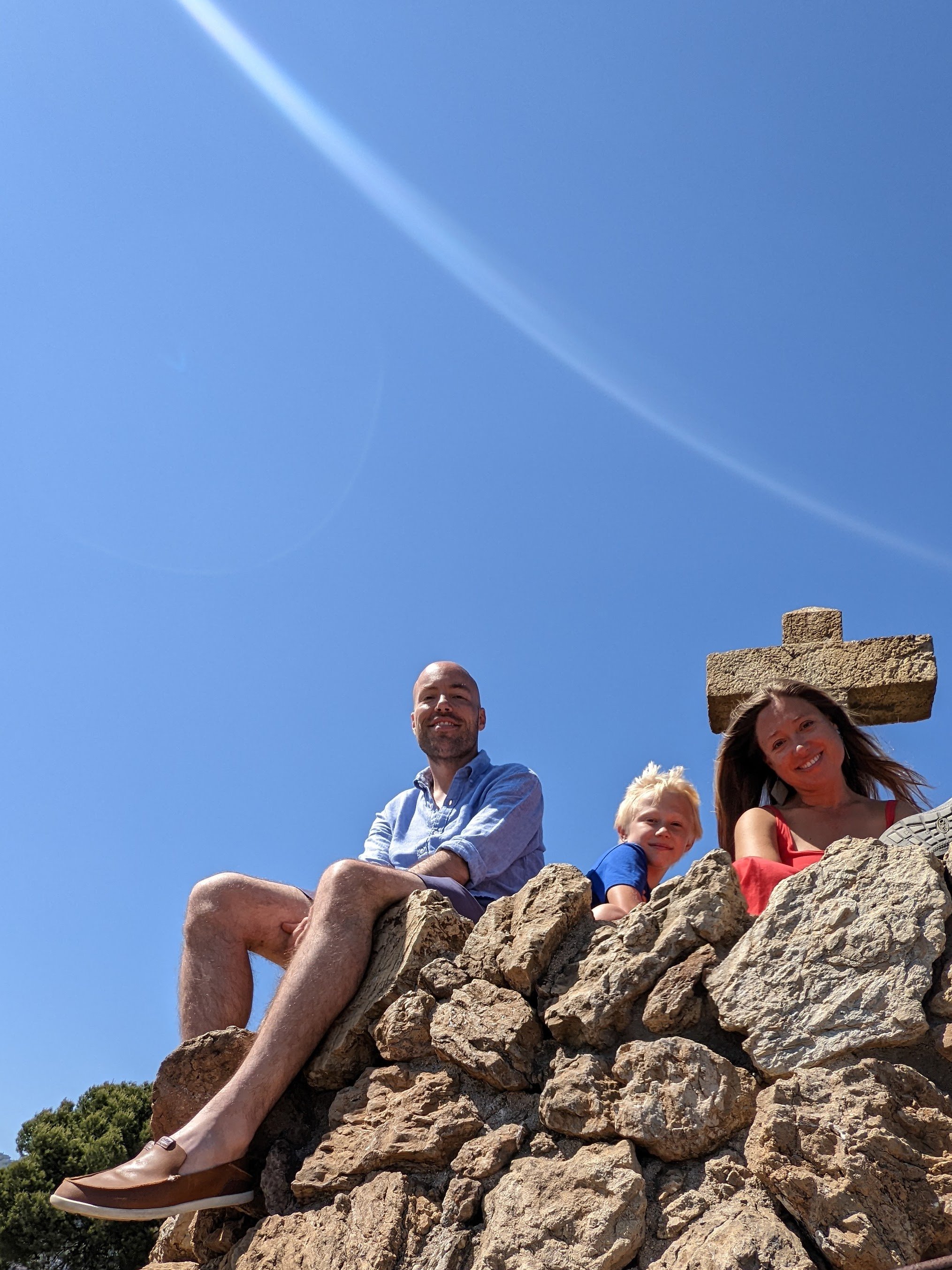Hiking the Megalithic structures in Roses Spain
The roof of the Dolmen de la Creu d’en Cobertella is a single stone slab that weighs approximately 18 tons. Photo by Casey Bond
What are Megalithic structures?
“Megalithic” is a generic term referring to structures made out of large stones. Stonehenge is perhaps the most well-known of these but there are thousands scattered across Europe. They generally date back to the Neolithic period, between 5000-2000 BC. These structures are particularly fascinating and leave the observer wondering how humans could have moved and lifted these massive stones without machinery. Many theories exist but there is no way to prove exactly how they did it and we are left with the mystery and our imaginations as we stand and marvel at their size. The vast majority of the megalithic structures are thought to have been associated in one way or another with burial practices. I find it fascinating that many of the most impressive and lasting structures from early human civilization are tombs: the tombs of Petra, the Egyptian pyramids, the megalithic structures, for example. How a society deals with their deceased reveals so much about the culture.
Bailey sitting by the monolith Menhir de la Casa Cremada 1, which in retrospect should probably not have been sat on.
There are many types of megalithic structures and the primary distinction in their categorization is the number of stones involved. Scattered along the hillside near Roses, Spain you can find the remains of multiple dolmens and monoliths. A dolmen is a megalith that is created by placing a large capstone on two or more supporting stones creating a chamber below often used as a tomb. Monoliths are composed of a single standing stone. In Western Europe, these are also referred to as Menhirs. There are several of these found in the Roses Neolithic site. Along this walk, you will also see the remains of more recent structures composed of stone, such as the dry stone hut which likely dates back to the 17th or 18th century. Additionally, there are several cave dwellings that were likely used for temporary shelter as far back as 5,000 BC.
The boys in front of the Dry Stone Hut built out of pure stone with a false vault technique
I am including all of this background information because this information could not be found while visiting the site. There are informational signs, but they are all in Spanish or Catalan and the QR code that is intended to be scanned to translate the information into English was not working on any of the signs. As a result, I was using my phone to research the structures while doing the hike, which was not ideal. For this reason, I recommend learning a bit about the structures before visiting.
The walk:
Finding a good map and details on how to do this walk was nearly impossible. I knew where the trailhead was located based on a few other blog posts I had read and we essentially just showed up at the trailhead and figured it out. There is a map located at the trailhead that shows the multiple routes you can take. You can take a photo of that map at the trailhead and use it to navigate the trail. I also found the Cami de Ronda trail map on Alltrails for a much longer trail in the area and used the downloaded map to create a shorter route. This worked well and was easy to follow.
The trail map posted at the trail head. We took the green route to the blue route to create a loop.
We essentially followed one small segment of the Cami de Ronda trail to see the Dolmen de la Creu d’en Cobertella and then followed a smaller trail branching off to the right which was indicated on the map in order to create our own loop. This path allowed us to see most of the major structures. You could piece together your own route by using the map at the trailhead and Alltrails like I did or follow the route that we took, which worked out well and was easy to follow.
Length:
2 miles
Difficulty:
Easy
Elevation:
About 300 feet.
The view of Roses Spain from the pinnacle of the hike.
Payout:
8/10. The structures are really cool to see and the views from the highest point of this hike are really nice as well. Part of the trail seems to have suffered from a recent fire and consists of a burnt grape vineyard. The rest of the trail consists of the classic coastal desert shrub.
Trailhead:
The trailhead is located on Carretera de Montjol. When I entered “Dolmen Roses Parking” into google maps, it took us to the right spot. You will see the small gravel parking lot on the left hand side of the road approximately 1.5 km after turning onto Carretera de Montjol.
The paved stone path at the trailhead that leads up to Dolmen de la Creu d’en Cobertella
Following the path that we took:
From the parking lot, you will see the main trail, a stone paved path, leading up the hill to the left towards the most famous dolmen, Dolmen de la Creu d’en Cobertella. Continue following the path up the hill past the dolmen towards the Mas de la casa cremada. At the mas de la casa cremada, the remains of a stone block structure, stay to the right. You will pass a few smaller trails that branch off to the left. In general, stay right to complete the loop. You will pass two Menhirs and the remains of the dry stone hut on your way up the hill. Shortly after summiting the hill, take the trail that branches off to the right to see the cave shelters on your way back down into the valley. One of the caves will be on the right side of the trail and is indicated by a sign post. The second requires you to take a small side trail on the left side for a short scramble to Cova-Domen del Rec de la Quarantena II. Continue down the path to the road where you will come out just past the parking lot. Walk back along the road for about 100 feet to the car parking area.
With the Alltrails map of Cami de Ronda. We followed the blue line improvising a loop trail that took us by multiple archeological sites.
What you will see along this route:
Dolmen de la Creu d’en Cobertella: The most famous structure of this site which consists of a massive granite slab supported by multiple smaller slabs. This was likely once covered by a mound of earth and used as a tomb. This was reportedly later preserved within a farmhouse and was used as a corral until the house was abandoned.
Mas de la Casa Cremada: remains of a stone building
The view out the door from the Dry Stone Hut.
Menhir de Casa Cremada 2: a monolith which was partially destroyed by vandalism and now has stones supporting its base.
Dolmen de la Casa Cremada: We missed this one as it is no longer in its original form.
Menhir de la Casa Cremada 1: monolith
Cova-Dolmen del Rec de la Quarantena I
Cova-Dolmen del Rec de la Quarantena I: small cave with a few stones placed at the entrance.
Cova-Dolmen del Rec de la Quarantena II
Cova-Dolmen del Rec de la Quarantena II: larger cave with vertical stones at the entrance
Tips:
Download the Alltrails map for Rosas-Cami de Ronda-El Megalitic to help follow the loop and find the structures. Some are not as obvious as you might expect.
If you don’t speak Spanish or Catalan, do your research on the site before you go so that you will know what you are looking at.
Bring water and be prepared for lots of sun exposure on this route. There is very little shade.
The opening at the peak of the all stone structure built with a false vault technique. The Dry Stone Hut
Final thoughts:
This was a great, short walk to see some really cool ancient structures. We only saw one other person on the entire hike and had the place to ourselves to contemplate the antiquity of the structures and their methods of construction. If you have done this route or taken a different route to explore this sight, share your tips and experiences in the comments below.













